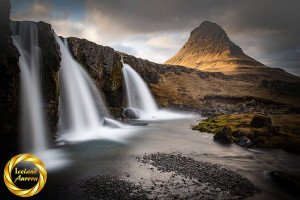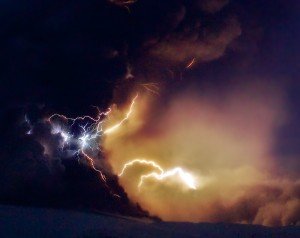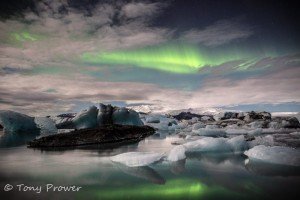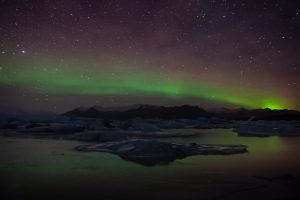Creative Long Exposure Photography
From silky waterfalls to star trails, long exposure photography captures the world in a way we don’t normally see. These slow shutter photos are popular and capture the viewer’s imagination, so it is worth studying long exposure photography to add some unique perspectives to your portfolio.

Small Group Ice Caving
How long is a long-exposure?
It sounds like a nonsense question, but when is an exposure defined as “long” or “short”? A shutter speed of 1/1000th sec seems very fast, but if you are photographing the wings of a bee, 1/1000th sec would be a long exposure. Using a shutter speed of 1/10,000th sec would be a suitable exposure.
Most Milky way exposures are around 20 seconds, but I would consider this to be a short exposure. My point is that the photographer has kept the exposure as short as possible to avoid star trails. It makes things much simpler if we define a long exposure on the final result or the intended communication. For example, If we compare a milky way photograph with a star-trail photo, the photographer is communicating scale and distance in the Milky way scene. In the star-trail photo, the photographer is communicating the sense of the rotation of the Earth by the movement of the stars.


Waterfalls
Long exposures make flowing water look beautiful, but waterfalls don’t need a very long exposure to look great. The human eye is supposed to see things in about 1/15 of a second. Tell that to people who don’t like the Milky water effect.
If you set your shutter speed to 1/15 you will capture very close to how the human eye sees the waterfall. I recommend shutter speeds from 1/15 – 1/2 sec to photograph most waterfalls.
Although a monopod occasionally works with shutter speeds faster than 1/15 second, slow shutter speeds require a tripod. Some people don’t like the smooth water effect, but the quickest way to ruin a beautiful waterfall is to take a quick photo of it. There are some exclusions. This photo of Skogafoss waterfall rainbow captured a portion of the falls with a fast shutter. The reason for the fast shutter is because this was a hand-held photograph. Also, a long exposure can kill a rainbow’s intensity, so a fast shutter makes sure of capturing the intensity of the rainbow.
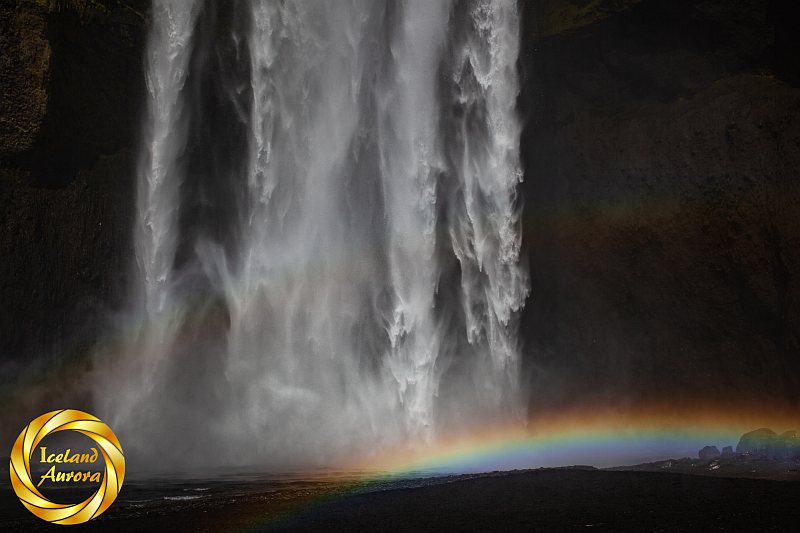
Magic Cloth
This vertical photo of Skogafoss waterfall used a 13 second exposure. This is because I used my Magic Cloth to give extra exposure to the nearby, grassy rocks. The waterfall itself would have only had about one second exposure time. This is still more than enough exposure time and the waterfall has been rendered as totally smooth.
If you are going to turn the water silky, I would recommend having something solid with good detail to contrast with the sense of movement.

Beach photography
Long exposures can work very well on a beach. Receding waves paint white lines. Half to two second exposures are recommended for beach work. If your shutter speed is too long, the sea looks like a sea of milk and there are no definitive lines. Sometimes, you can get the white lines without a long exposure. Beach exposures can vary depending on the texture and slope of the beach.

Magic Cloth Special Applications
The picture above was taken with a long exposure on the ice beach. The Magic Cloth covered the lens when the waves came in so only receding waves (wet sand) were exposed over a very long exposure (168 sec).
Recommended camera gear for long exposure photography.
















